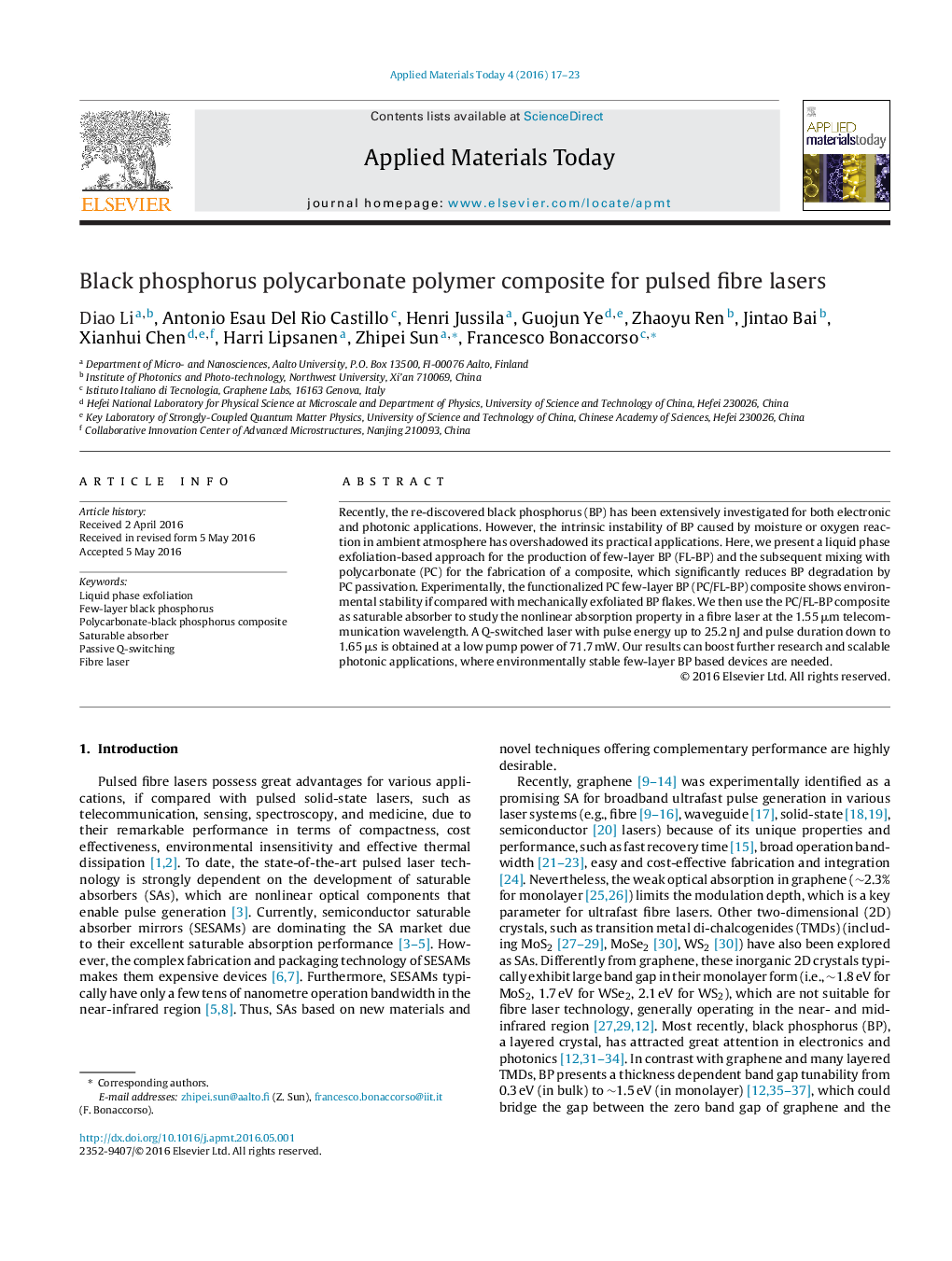| Article ID | Journal | Published Year | Pages | File Type |
|---|---|---|---|---|
| 1412940 | Applied Materials Today | 2016 | 7 Pages |
•Liquid phase exfoliation is demonstrated as a feasible method for the production of few-layer black phosphorus flakes.•Few-layer-based black phosphorus composite with polycarbonate shows high optical stability.•Stable large-energy (up to 25 nJ) pulse generation is demonstrated by using the black phosphorus-polycarbonate composite.
Recently, the re-discovered black phosphorus (BP) has been extensively investigated for both electronic and photonic applications. However, the intrinsic instability of BP caused by moisture or oxygen reaction in ambient atmosphere has overshadowed its practical applications. Here, we present a liquid phase exfoliation-based approach for the production of few-layer BP (FL-BP) and the subsequent mixing with polycarbonate (PC) for the fabrication of a composite, which significantly reduces BP degradation by PC passivation. Experimentally, the functionalized PC few-layer BP (PC/FL-BP) composite shows environmental stability if compared with mechanically exfoliated BP flakes. We then use the PC/FL-BP composite as saturable absorber to study the nonlinear absorption property in a fibre laser at the 1.55 μm telecommunication wavelength. A Q-switched laser with pulse energy up to 25.2 nJ and pulse duration down to 1.65 μs is obtained at a low pump power of 71.7 mW. Our results can boost further research and scalable photonic applications, where environmentally stable few-layer BP based devices are needed.
Graphical abstractFigure optionsDownload full-size imageDownload as PowerPoint slide
